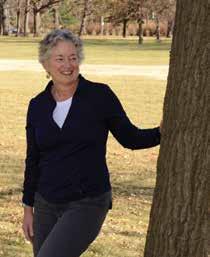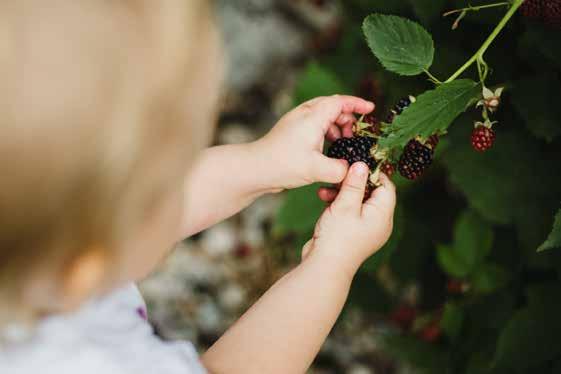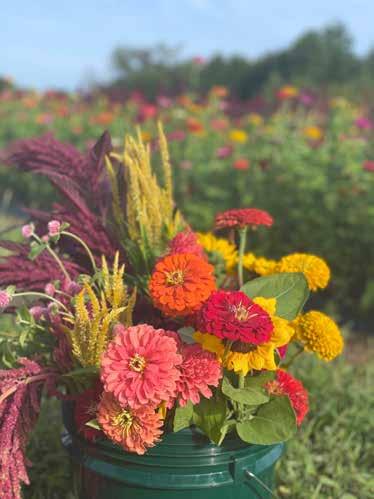
3 minute read
Community in the garden
Remember my friend Amy, who dropped by my garden last year? I shared the story of our meeting and my embarrassment of the number of noticeable spider webs as we strolled my garden. Staying about five steps ahead, I tidied up while we walked and talked about our gardens. I soon let go of the self-induced pressure of a perfectly tidy garden, and began to enjoy talking about my garden.
Well, dear Amy was back in touch to invite me to speak to her group of gardeners. “Just tell the story of how you started the magazine,” she said. I reminded myself to take it easy. We’re all just regular gardeners having fun.
913-648-4728
NEED MORE MAGAZINES? mike@kcgmag.com
913-648-4728
CONTACT US P.O. Box 8725
Prairie Village, KS 66208
913-648-4728
ADVERTISING
Mike Cavanaugh at mike@kcgmag.com
913-648-4728
EDITORIAL
Elizabeth Cavanaugh elizabeth@kcgmag.com
913-648-4728
HOW TO SUBSCRIBE
See details on page 19.
SUBSCRIPTION
Elizabeth Cavanaugh elizabeth@kcgmag.com

913-648-4728
WEBSITE
What a privilege it was to spend time with this group of gardeners. They are community gardeners who have garden plots at one of our city parks in Prairie Village. After introductions, and my apology for having clean nails (gardeners have dirty fingernails, right), I made this clear—I’ll tell you my story and you feel free to ask questions along the way. I’m not fond of hearing myself talk. “My hope is to hear about your gardens,” which is always my wish when gathering with gardeners.
This event turned out to be a real delight for me. I left feeling inspired by what you can accomplish in a 4’X20’ space. Those of us living in neighborhoods with heavy tree canopy know the limitations of having a vegetable garden. Having a plot in this community garden where sunlight is ample sets gardeners on the path to a plentiful bounty. And after touring Amy’s plot, I was amazed at her success. Now I’m considering a plot of my own.
Hanging with fellow gardeners sharing our success stories as well as our failures is an easy way to learn. Not only are we willing to share our experiences, but also we will offer to teach what we know.
Another opportunity for community gathering was after the severe thunderstorm of July 14, that devastated our area with downed trees and widespread power outages. We were without electricity for four days. While it was summer hot and high humidity, spending time outside with our neighbors was the respite we all needed to talk about the obvious as well as a multitude of other topics. Like the houses that have recently sold, and those that are preparing to sell and why. How the kids across the street have grown. How is our neighbor on the west faring after her husband suddenly passed away. John, our neighbor to the east gives an update on his daughter who moved to California. How is Dixie handling assisted living. We live on a street where everyone knows your name. I love that.
These are opportunities for connection. We go about our daily routine allowing technology to infiltrate the most intimate parts of our lives by being connected. And in doing so, we fail to make a connection with our neighbors. While four of us were chatting in the driveway, Kylee said, “Isn’t this nice?” Slowing our pace, we all agree, is one of the benefits of the storm. Like the gardeners gathering where we chatted about our gardens, our driveway gathering was similar, one of caring and sharing a portion of our lives. A fully human experience, a community in the garden.
I’ll see you in the garden!



Dear Readers – I am excited to welcome my new co-worker to the column. Anthony Reardon joined Johnson County Extension as our agent specializing in edible crops. Anthony is a K-State Horticulture graduate. I will continue to work in ornamentals and with our wonderful Extension Master Gardener volunteers. Please join me in welcoming Anthony to our KC gardening family Dennis
Plant Veggies For Fall Harvest
Question: I want to give fall cool-season vegetables a try this year, but I’m not sure how to go about it. Is there a difference between planting for spring harvest and planting for fall harvest?
Anthony’s Answer: The primary factor to keep in mind with spring and fall cool-season crops is the differences observed in environmental temperatures, both above and below ground. In the early months of the year, when planting for a spring harvest, soil is likely to still be very cold. Believe it or not, cool season crops prefer this as they germinate, as the seedlings have less-hostile conditions to fight against as they root out and grow. Because of this, minor modifications must be made for the heat in late summer. Namely, plant the seeds slightly deeper than recommended, where the soil is likely to be cooler.
Water also will be a large factor to consider when planting for a fall crop, as the soil is more likely to dry out or crust over due to the heat. Monitor soil moisture to be consistently moist, potentially incorporating compost or organic matter over the rows to assist your efforts. As the seedlings emerge, watering frequency then can be gradually backed off so to prevent root rot or dampening-off of the seedlings.
Keep in mind as well, insects and wildlife will be in full force in the late summer as opposed to late winter when they’re hibernat-







